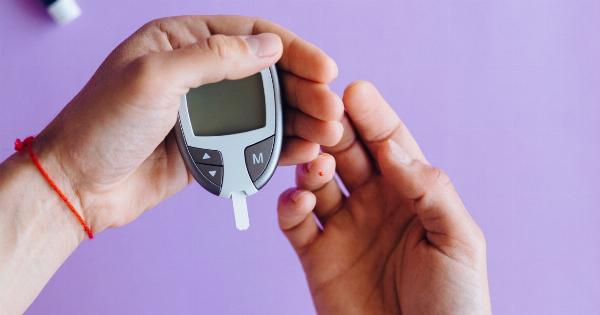Having a heart attack is a terrifying experience that often leads to life-altering changes.
But did you know that the risk of a second heart attack is even greater? Taking proactive measures to reduce your risk of a second heart attack is crucial for your long-term health and well-being. In this article, we will discuss 30 strategies that can help you significantly cut your risk of a second heart attack by 23%.
1. Follow a Heart-Healthy Diet
What you eat directly impacts your heart health. Opt for a diet rich in fruits, vegetables, whole grains, lean proteins, and healthy fats. Avoid processed foods, sugary snacks, and excessive sodium intake.
Consult a registered dietitian for personalized nutrition guidance.
2. Maintain a Healthy Weight
Excess body weight puts extra strain on your heart. Make it a priority to achieve and maintain a healthy weight by combining a nutritious diet with regular physical activity.
3. Engage in Regular Exercise
A sedentary lifestyle increases your risk of a second heart attack. Aim for at least 150 minutes of moderate-intensity aerobic exercise or 75 minutes of vigorous exercise per week. Additionally, incorporate strength training activities twice a week.
4. Quit Smoking
Smoking is one of the leading causes of heart attacks. Quitting smoking is the single most significant step you can take to reduce your risk of a second heart attack.
Seek support from healthcare professionals, join a support group, or consider nicotine replacement therapy.
5. Limit Alcohol Intake
Excessive alcohol consumption can raise your blood pressure and increase the risk of another heart attack. Keep your alcohol intake moderate, which means up to one drink per day for women and up to two drinks per day for men.
6. Manage Stress Levels
Chronic stress contributes to heart disease. Find healthy ways to manage stress, such as practicing relaxation techniques, seeking therapy, exercising, and engaging in hobbies.
7. Get Enough Quality Sleep
Lack of sleep can increase your risk of heart disease. Aim for 7-9 hours of quality sleep each night. Develop a bedtime routine, ensure a comfortable sleep environment, and limit caffeine and electronic device usage before sleep.
8. Control High Blood Pressure
High blood pressure strains your heart and increases the risk of a second heart attack. Monitor your blood pressure regularly, take prescribed medications as directed, and make lifestyle changes to keep it under control.
9. Manage Diabetes
Diabetes puts you at higher risk for heart attacks. Work closely with your healthcare team to manage your blood sugar levels through diet, exercise, medication, and regular monitoring.
10. Stay Compliant with Medications
If your doctor has prescribed medications, take them as directed. These medications can help control your cholesterol, blood pressure, and other risk factors for a second heart attack.
11. Optimize Your Cholesterol Levels
High cholesterol levels contribute to plaque build-up in your arteries. Follow a heart-healthy diet, exercise regularly, and take prescribed medications if necessary to keep your cholesterol levels in check.
12. Attend Cardiac Rehabilitation Programs
Cardiac rehabilitation programs can significantly reduce your risk of a second heart attack. These programs provide exercise training, education, and support to help you recover and improve your heart health.
13. Monitor Your Heart Rate and Rhythm
Sudden changes in heart rate and rhythm can increase the risk of a heart attack. Use wearable technology or consult with your doctor to monitor your heart rate and rhythm regularly.
14. Limit Processed and Red Meat Consumption
Processed meats and excessive red meat consumption have been linked to heart disease. Opt for lean protein sources like fish, poultry, legumes, and tofu, and limit your intake of processed and red meats.
15. Incorporate Omega-3 Fatty Acids into Your Diet
Omega-3 fatty acids have been shown to improve heart health. Include fatty fish like salmon, mackerel, and sardines, as well as walnuts, flaxseeds, and chia seeds in your diet.
16. Control Your Blood Sugar Levels
Consistently high blood sugar levels can damage your blood vessels and increase the risk of another heart attack. Follow a diabetic-friendly diet, exercise regularly, take medications as prescribed, and monitor your blood sugar levels frequently.
17. Limit Sodium Intake
Consuming excessive sodium can raise blood pressure and strain your heart. Read food labels, avoid processed foods, and flavor your meals with herbs and spices instead of excessive salt.
18. Aim for Adequate Fiber Intake
Fiber-rich foods, such as whole grains, fruits, vegetables, and legumes, promote heart health. Aim for at least 25 grams of fiber per day to help lower cholesterol levels and maintain a healthy heart.
19. Consume Antioxidant-Rich Foods
Antioxidants help protect your heart from damage caused by free radicals. Include a variety of antioxidant-rich foods in your diet, such as berries, dark chocolate, tomatoes, and green leafy vegetables.
20. Avoid Excessive Caffeine Consumption
While moderate caffeine intake is generally safe, excessive consumption can raise your blood pressure and heart rate. Limit your caffeine intake from coffee, tea, energy drinks, and other sources.
21. Practice Mindfulness and Meditation
Mindfulness and meditation techniques help reduce stress and promote heart health. Set aside a few minutes each day to practice deep breathing, meditation, or mindfulness exercises.
22. Foster Healthy Relationships
Strong social support and positive relationships can help reduce your risk of a second heart attack. Nurture healthy relationships, connect with loved ones, and seek support from friends and family.
23. Limit Trans Fat Consumption
Trans fats raise your bad cholesterol levels and increase the risk of heart disease. Avoid foods made with partially hydrogenated oils, such as fried foods, baked goods, and processed snacks.
24. Control Your Stress Eating
Avoid turning to unhealthy snacks or overeating in response to stress. Develop alternative coping mechanisms like exercising, talking with a friend, or engaging in a hobby.
25. Monitor Your Alcohol Consumption
Excessive alcohol intake can lead to high blood pressure and other heart-related complications. Keep track of your alcohol consumption and seek professional help if you struggle with alcohol dependence.
26. Stay Hydrated
Proper hydration is essential for heart health. Drink an adequate amount of water each day to help maintain good blood circulation and support your overall well-being.
27. Practice Portion Control
Avoid overeating and practice portion control to maintain a healthy weight and prevent the strain on your heart. Use smaller plates, pay attention to hunger cues, and avoid eating until you feel overly full.
28. Take Regular Breaks from Sitting
Sitting for prolonged periods can increase your risk of heart disease. Make it a habit to take regular breaks, stretch, and move around throughout the day, especially if you have a desk job.
29. Stay Updated with Your Vaccinations
Preventable illnesses can increase the strain on your heart. Stay updated with vaccinations, including the flu vaccine and pneumonia vaccine, to protect your overall health.
30. Attend Support Groups
Joining a support group can provide emotional support and valuable insights into preventing a second heart attack. Share your experiences, learn from others, and surround yourself with individuals who can relate to your journey.






























